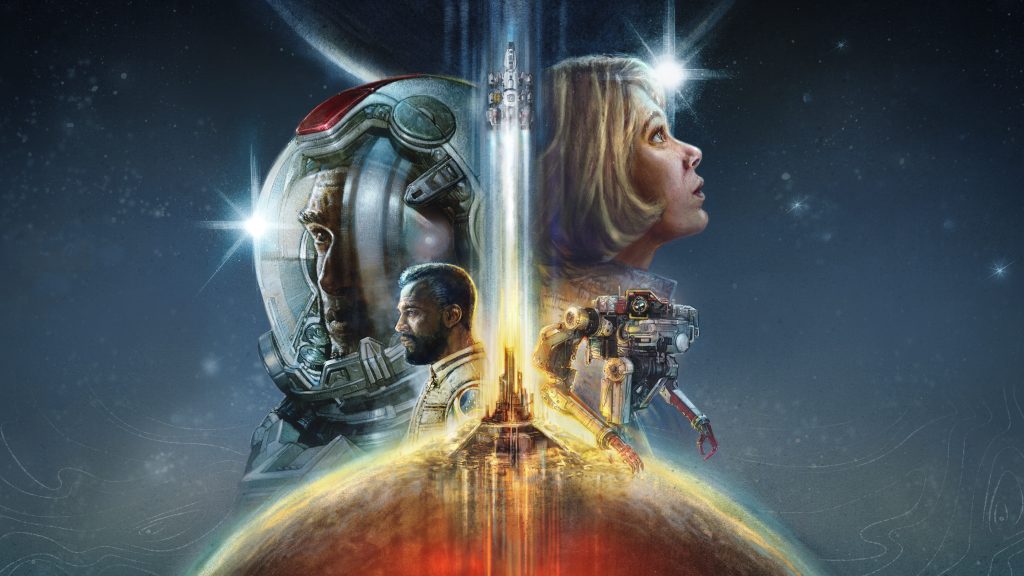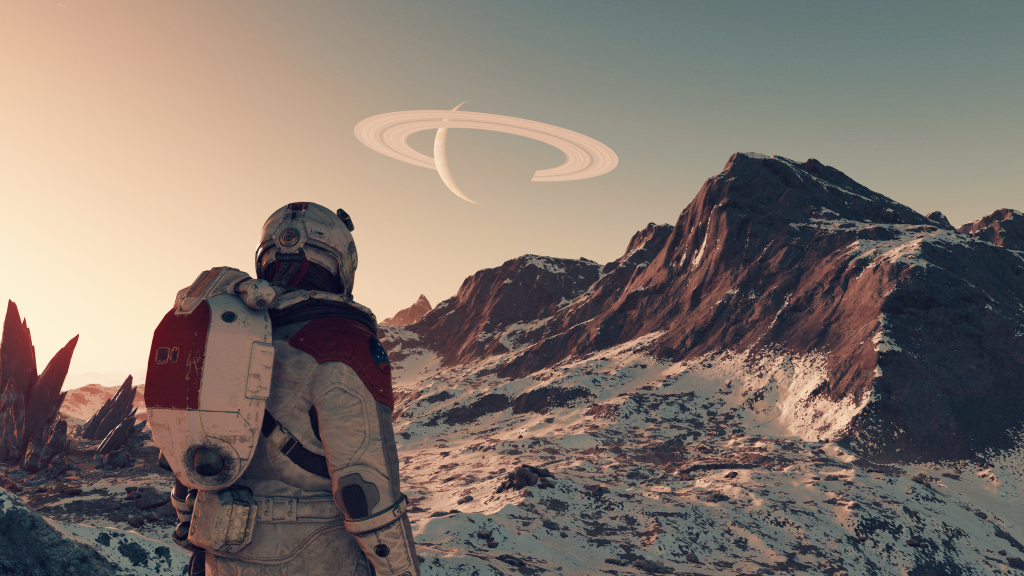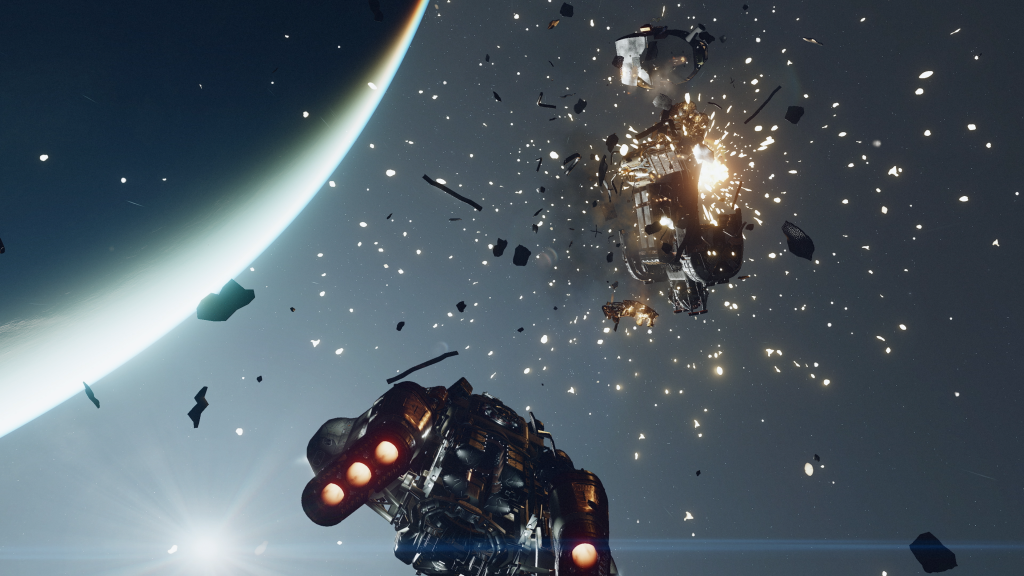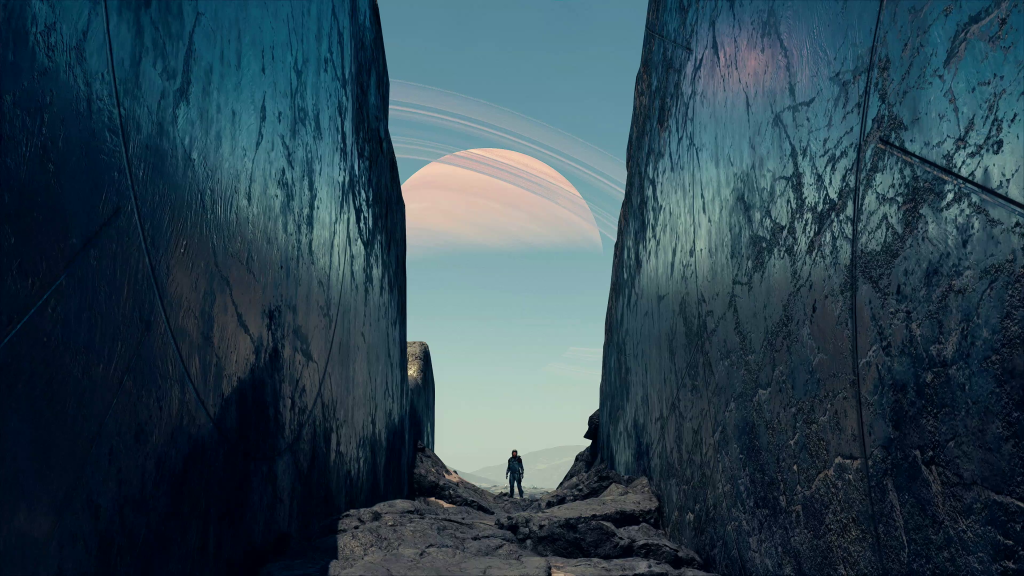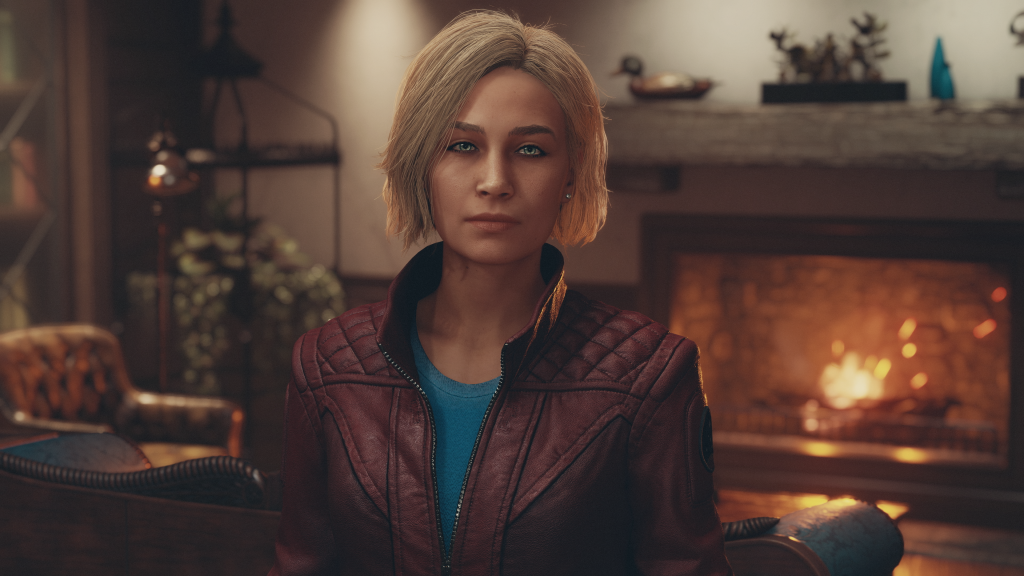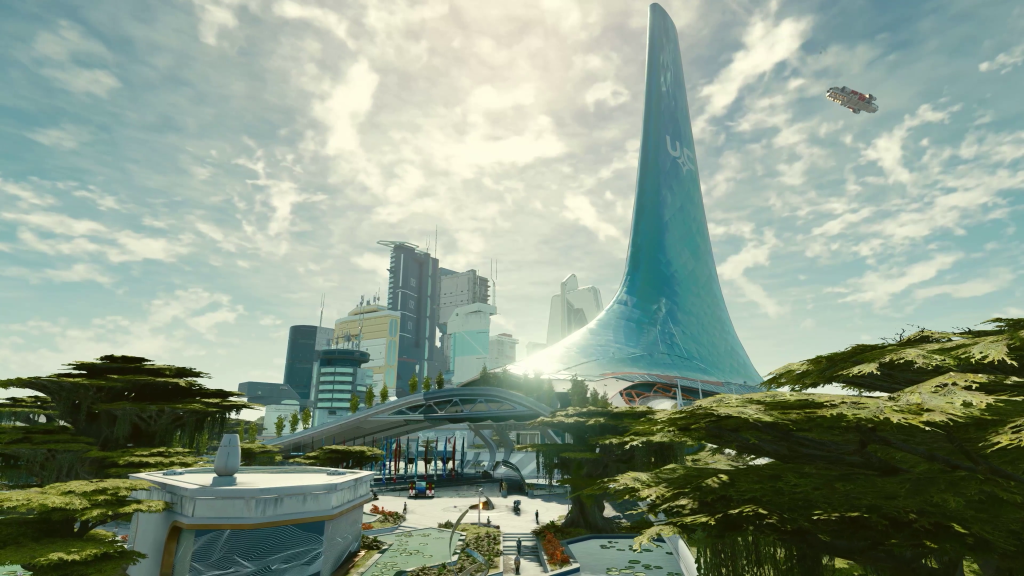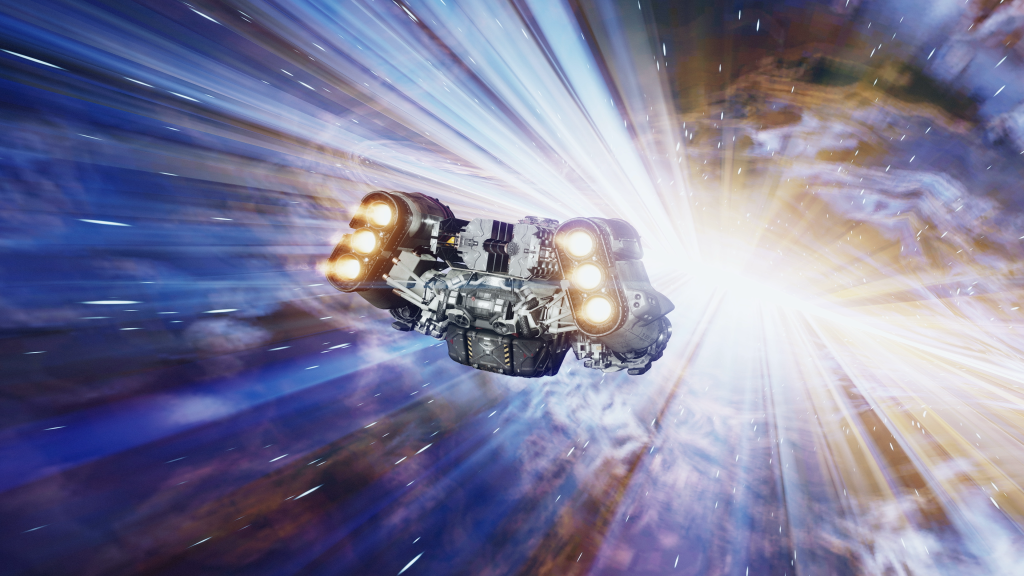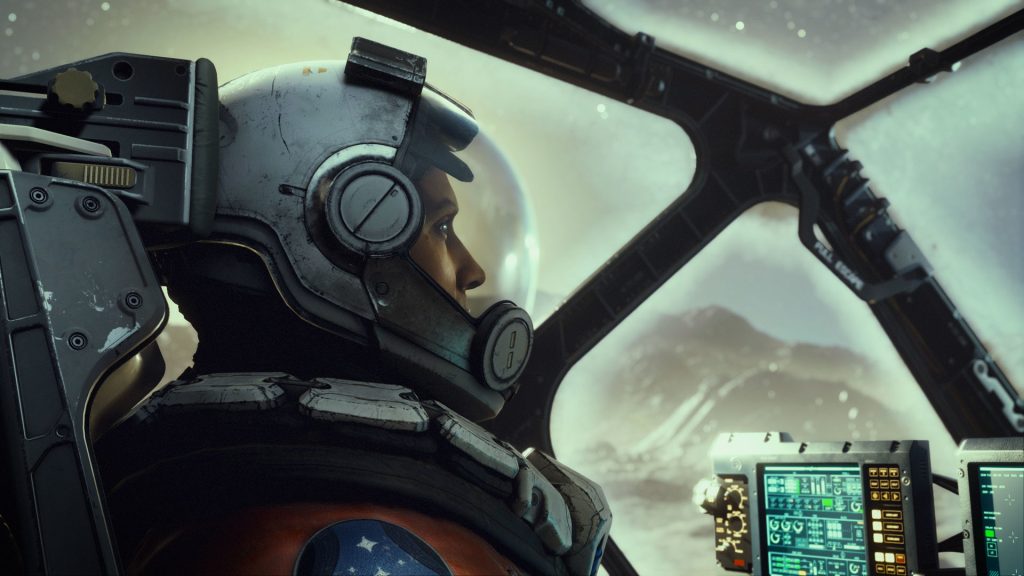Starfield is the first new IP from Bethesda Game Studios (BGS) in over 25 years. It follows then, that Starfield was an opportunity to really branch out and innovate. On paper, they’ve done exactly that. Starfield is a big ol’ RPG set in space where you can build and fly your own ship, explore alien worlds, and get involved in interstellar politics. So why did it bore me to tears?
First, let’s get some of the basics out of the way. You play as a blank-slate space adventurer who accidentally uncovers a mysterious relic that gives them visions. The secret society Constellation almost instantly comes knocking, hoping that you’ll join them because you touched the magic metal. That’s about it as far as the main narrative premise goes, but as is the case with BGS’ other series, Fallout and The Elder Scrolls, the good stuff lies in everything other than the main story.
At its core Starfield plays similarly to Fallout 3 and 4. You can choose a first or third-person camera, shoot alien creatures, explore dungeon-like mines, labs, outposts, and spaceships, loot everything under the sun (or suns), and make largely inconsequential dialogue choices. Jump packs allow for some verticality and there are some interesting abilities tied to the aforementioned magic metal, but otherwise, it all feels very familiar.
If you are an Elder Scrolls or Fallout fan then there is one key thing to know about Starfield. Given the nature of it being set in space, there is no single, large, interconnected explorable area with hand-placed environments. Instead, you fast-travel or use your ship’s gravity drive to jump from planet to planet. So while the game does feature hand-crafted areas and large cities like New Atlantis or Akila, they are all segmented off from each other.
This may sound obvious, but what is harder to convey is just how much is lost here. Having a big open world available to you right at the start, picking any direction and just heading out is what makes the likes of Elder Scrolls and Fallout so magical. Starfield, in contrast, often feels like a series of small areas connected by an endless wormhole of loading screens.
The big areas, those found on the planets you can land on, are, outside of a few key planets, procedurally generated. Meaning when you pick a specific spot on a planet to land it will be roughly translated into an explorable 3D environment with certain minerals and terrain, but the points of interest (spacer hideouts, abandoned labs, etc.) are cookie-cutter with layouts that are quickly repeated.
What all of this results in is a sense of disconnect that completely gets in the way of the immersion BGS games are known for. Because the ‘character’ of the world is so diluted, a huge burden is placed on the writing and worldbuilding to convey the sense that you’re exploring an actual place. Unfortunately, it’s simply not up to the task.
The writing in Starfield lacks any weight. Space is a mysterious and dangerous place but in Starfield there is never any real sense of tension or fear. One mission sees you return to the mine where the game starts. You find your old boss, Jin, cowering in fear, alone, the rest of her workers picked off by space pirates. She asks you to rescue Barret, the man both you and the pirates have been looking for.
At no point in this mission was I made to feel anything about this situation or the people in it. Jin is surrounded by death and her two best friends are now in the hands of these pirates. Yet when you talk to her, or listen to recordings left behind by those taken, they’re either completely neutral or cracking wise as if they’re on a jolly adventure. There’s no acknowledgment from Barret that his coming to this planet, and thus luring the pirates, is the reason all these miners are dead.
It’s just odd. The tone is all over the place and completely ineffective. This wouldn’t be too big an issue if the above example were from a small side quest but this mission is part of the main story. The bar has been raised with regard to open-world storytelling multiple times since the release of Fallout 4 in 2015. The Witcher III, the Horizon series, Red Dead Redemption 2, Ghost of Tsushima, and Cyberpunk 2077 all spring immediately to mind. When compared to these heavy hitters, Starfield feels positively archaic.
The world-building is similarly weak. Humanity spreading among the stars is a concept rife with potential and yet the best they could come up with in Starfield is utterly derivative. You have the smooth and white utopia of New Atlantis, the Freestar Collective is just Space Texas complete with accents and cowboy hats, and the town of Neon does its best Fisher-Price Blade Runner.
The UI is another element that makes Starfield feel like a relic of the past. There are a lot of different menus and every single one feels unintuitive and clunky. Whether it’s managing your inventory or upgrading a spaceship, Starfield will go out of its way to make the experience slow, obtuse, and frustrating.
So does Starfield manage to do anything right? Well, for one thing, it looks great. The lighting engine and level of detail are leagues ahead of anything this team has ever done. The so-called ‘NASA-punk’ style is rendered exquisitely, with space suits, weapons, and spaceships all having wonderfully intricate designs. Character hair and faces are a different story; there is still a significant amount of Bethesda jank in this area, although they are undoubtedly improved over their older titles.
Combat is another area that is uncharacteristically solid. Weapons feel and sound great and aiming down sights is snappy. It’s not particularly groundbreaking but for a BGS game, it’s surprisingly functional. The ship combat is neat at first but quickly becomes repetitive and, again, feels like an afterthought.
The soundtrack confidently captures the feeling of going on a grounded, cinematic space adventure. The strong use of Starfield’s main motif played on crisp French horns creates a solid backbone from which the rest of the score branches out.
To its credit, Starfield does have moments when that old BGS magic shines through. Ten or so hours in the ‘loop’ of Starfield begins to crystallise through sheer osmosis. The incentives for exploring and completing quests are definitely there, they just take a long time to emerge from the confusing fog that is Starfield’s many disparate systems.
Indeed, Starfield often feels like a collection of features developed in isolation, with little care given to how they interact with or are informed by each other. Every time I booted up the game it felt like I was rolling the dice. Maybe I’d have a great time following a particular quest line or exploring a vibrant city, or maybe I’d fall asleep at my desk after dealing with endless loading screens, uninspired world-building, and a clunky UI.
Much like a space adventurer plotting their course across the galaxy, I cannot guarantee that you’ll find what you’re looking for in Starfield. For those with the utmost determination and resilience to all the obstacles the game throws in your way, it’s possible you might find something special. Unfortunately for me, Starfield left me utterly untethered, slowly drifting off into nothingness.
Rating: 6.5/10
Starfield was reviewed on PC with a code provided by the PR team.

